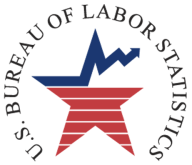Attachment T - 2021 Response Rates for the Interview and Diary Surveys
Attachment T - 2021 Response Rates in the CE Survey.docx
Consumer Expenditure Surveys: Quarterly Interview and Diary
Attachment T - 2021 Response Rates for the Interview and Diary Surveys
OMB: 1220-0050
U .S.
Department of Labor Bureau
of Labor Statistics
.S.
Department of Labor Bureau
of Labor Statistics
2 Massachusetts Ave. N.E.
Washington, D.C. 20212
August 31, 2022
MEMORANDUM FOR: DAVID C. SWANSON, Supervisory Mathematical Statistician
Branch of Consumer Expenditure Surveys
Division of Price Statistical Methods
Office of Prices and Living Conditions
FROM: SHARON L. KRIEGER, Mathematical Statistician
Branch of Consumer Expenditure Surveys
Division of Price Statistical Methods
Office of Prices and Living Conditions
SUBJECT: 2021 Response Rates for the Interview and Diary Surveys
In 2021 the response rate for the Interview survey was 45.6%. That means 45.6% of “eligible” CUs participated in the survey. The table below shows this 2021 response rate along with those for 2017 thru 2020 as a comparison.
Interview Survey
Collection Year |
CUs Designated for the Survey |
Type B or C Nonresponses |
Total Eligible CUs |
Type A Nonresponses |
Interviews |
Response Rate for Eligible CUs |
2017 |
47,949 |
7,756 |
40,193 |
15,714 |
24,479 |
60.9% |
2018 |
48,018 |
7,652 |
40,366 |
17,207 |
23,159 |
57.4% |
2019 |
47,799 |
7,410 |
40,389 |
18,688 |
21,701 |
53.7% |
2020 |
50,939 |
8,027 |
42,912 |
22,667 |
20,245 |
47.2% |
2021 |
51,944 |
7,306 |
44,638 |
24,304 |
20,334 |
In 2021 the response rate for the Diary survey was 40.0%. That means 40.0% of “eligible” CUs participated in the survey. The table below shows this 2021 response rate along with those for 2017 thru 2020 as a comparison.
Diary Survey
Collection Year |
CUs Designated for the Survey |
Type B or C Nonresponses |
Total Eligible CUs |
Type A Nonresponses |
Interviews |
Response Rate for Eligible CUs |
2017 |
24,696 |
4,586 |
20,110 |
8,452 |
11,658 |
58.0% |
2018 |
24,522 |
4,389 |
20,133 |
9,054 |
11,079 |
55.0% |
2019 |
24,566 |
4,322 |
20,244 |
9,562 |
10,682 |
52.8% |
2020 |
36,132 |
5,693 |
30,439 |
19,824 |
10,615 |
34.9% |
2021 |
36,106 |
5,902 |
30,204 |
18,137 |
12,067 |
40.0% |
Type B or C nonresponses are housing units that are vacant, nonexistent, or ineligible for interview. Type A nonresponses are housing units which the interviewers were unable to contact or the respondents refused to participate in the survey. The response rates stated above are based only on the eligible housing units (i.e., the designated sample less Type B and C nonresponses).
COVID-19’s Impact on Response Rates
The COVID-19 pandemic contributed to a decrease in the response rates from 2019 to 2020, from 53.7% to 47.2% in the Interview survey, and from 52.8% to 34.9% in the Diary survey. In large part, the decrease was caused by changes to data collection protocols at the Census Bureau.
From mid-March until the end of June 2020, the Census Bureau stopped personally visiting CUs and instead started contacting them exclusively by telephone. The Census Bureau was able to find telephone numbers for most addresses in the survey, but not all of them. That meant some of the CUs had an unknown eligibility status. CUs with unknown eligibility were treated as Type A nonresponses, which caused a noticeable drop in the response rates.
After June 2020, the Census Bureau gradually resumed its usual data collection protocols. However, the pandemic’s impact on response rates lingered throughout the rest of the year anyway. This impact was bigger in the Diary survey than in the Interview survey because it was harder for the Census Bureau to get interviews in the Diary survey than in the Interview survey. In the Diary survey most CUs were being contacted for the first time and many of their telephone numbers were unknown. In contrast, in the Interview survey most CUs had already been contacted in a previous quarter and their telephone numbers were known.
In 2021, the pandemic’s impact on response rates diminished as the Census Bureau continued to return to its usual data collection protocols. This resulted in a relatively small decrease in the response rates from 2020 to 2021 for the Interview survey, from 47.2% to 45.6%, and in a relatively large increase in the response rates from 2020 to 2021 for the Diary survey, from 34.9% to 40.0%.
The Sample Expansion’s Impact on Sample Sizes
The “sample expansion” in 2020 contributed to an increase in the number of “CUs Designated for the Survey,” from 47,799 to 50,939 in the Interview survey, and from 24,566 to 36,132 in the Diary survey. The sample expansion went into effect in April 2020 in the Interview survey and in January 2020 in the Diary survey. The reason for the expansion is that in 2020 the CE survey added some outlet-related questions to its questionnaires to replace CPI’s outlet information formerly collected by the TPOPS survey, and this meant the sample size in urban areas needed to be increased to ensure outlet sampling frame sufficiency in those areas.
cc: |
CESMD |
DCES_SUPER |
Others |
|
S. Ash |
J. Brattland |
A. Cobet |
|
S. Krieger |
B. Creech |
T. Garner |
|
B. Nix |
S. Curtin |
|
|
B. Steinberg |
M. Edwards |
|
|
D. Swanson |
L. Erhard |
|
|
L. Vermeer |
B. Rigg |
|
|
|
A. Safir |
|
|
|
|
|
| File Type | application/vnd.openxmlformats-officedocument.wordprocessingml.document |
| Author | KRIEGER_S |
| File Modified | 0000-00-00 |
| File Created | 2023-12-12 |
© 2026 OMB.report | Privacy Policy